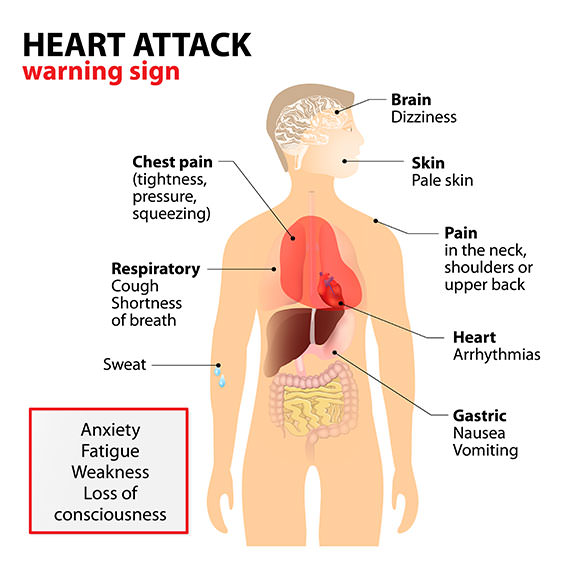I love hearing from my readers. Especially when they write to tell me that something they’ve learned from my letters has helped them become stronger and healthier.
That’s why I’m so pleased to share Kevin’s story with you. Kevin is a reader and Confidential Cures subscriber from South Africa. And he says my PACE program changed his life.
In July 2015, at the age of 63, Kevin went in for a routine stress test and EKG. He had been practicing yoga since his teens and was used to getting a clean bill of health from his doctor. But the prior year had brought a lot of life changes to Kevin’s family… and he fell into the habit of not exercising.
Kevin’s doctor was alarmed by his test results. She told him he had a blockage and that he needed to see a cardiologist right away.
WHAT IS AN ANGIOGRAM FOR THE HEART?
The cardiologist Kevin saw recommended an angiogram. That’s an invasive procedure in which a catheter is threaded through a blood vessel and iodine dye is injected so that your blood vessels show up clearly on X-rays.
RISKS OF ANGIOGRAM
There are risks associated with having an angiogram. Some people have an allergic reaction to the dye. Some people experience tears in the heart or blood vessels. Occasionally, the procedure itself can lead to a heart attack or stroke!1

Ultimately, Kevin opted not to have the angiogram done. And he started doing his yoga program again.
But this time, Kevin says, he wanted to try something different. He remembered reading about the heart-healthy benefits of my PACE program — and he decided to give PACE a try.
12-MINUTE PACE ROUTINE
On Nov. 7, 2015, Kevin did his normal 12 yoga poses. But he did them in three sets of
four, and increased the intensity of his movements with each set, resting after each. He gradually added Hindu squats to his routine… then burpees, forward lunges, and press-ups.
Kevin had created his own 12-minute PACE routine.
After just THREE WEEKS of incorporating PACE into his workout, Kevin went back to the doctor for a follow-up stress test and EKG.
Here’s what he had to say about that appointment…
“When my doctor looked at the results, she was shocked,” Kevin wrote. “She said: ‘Your heart is perfect. I’m surprised at how much it has changed.’
“The expression on her face cannot adequately be put into words…”
Kevin’s experience with PACE is fantastic, but it’s not unique. The key to Kevin’s success was the fact that he kept increasing the intensity of his workouts… and his heart’s output. In fact, that’s what PACE stands for — Progressively Accelerating Cardiopulmonary Exertion.
HEART-HEATLHY BENEFITS OF PACE

PACE is specifically designed to strengthen your heart. Short bursts of intense exercise are what nature intended for your heart and the rest of your body. Unlike cardio or other aerobic or endurance exercise, PACE causes an adaptive response. This means giving your body a new set of challenges so it adapts to what you’re asking it to do.
And that will allow your heart to increase its ability to pump harder for those times when you need it.
Like Kevin, many of my patients who have tried PACE have turned around their heart health.
And research backs up what I’ve seen in my clinic.
THE KEY TO EXERCISE
In the Harvard Health Professionals Study, researchers followed more than 7,000 people. They found that the key to exercise is not length or endurance. It’s intensity. The more energy a person exerted during exercise, the lower their risk of heart disease.2 In another study, intensity turned out to be the key to longevity and reduced risk of death.3
One of the easiest ways to get started with PACE is to do exactly what Kevin did… start with something you enjoy. Whether that’s swimming, running sprints or simply walking. Just remember to keep increasing the challenge. And to rest and recover fully between each period of exertion.
If you’d like to try some of the other exercises that Kevin did, check out my YouTube channel. There you’ll find 30 different exercises as well as a complete PACE workout.
Kevin finished his letter to me by saying: “Quite clearly, your PACE program really does work. And it works marvelously! Many, many thanks for caring about your subscribers.”
Knowing that the work I do is improving the health of my patients and readers is the greatest reward I could ask for.
Thank you for your letter, Kevin. And thank you to all of my readers.
To Your Good Health,
![]()
Al Sears, MD, CNS
1. Tests and Procedures. Coronary angiogram. The Clinic.
2. Lee I, et al. Relative intensity of physical activity and risk of coronary heart disease. Circulation. 2003;107(8):1110-6.
2. Lee I, et al. “Exercise intensity and longevity in men. The Harvard Alumni Health Study.” JAMA. 1995 Apr 19;273(15):1179-84.

